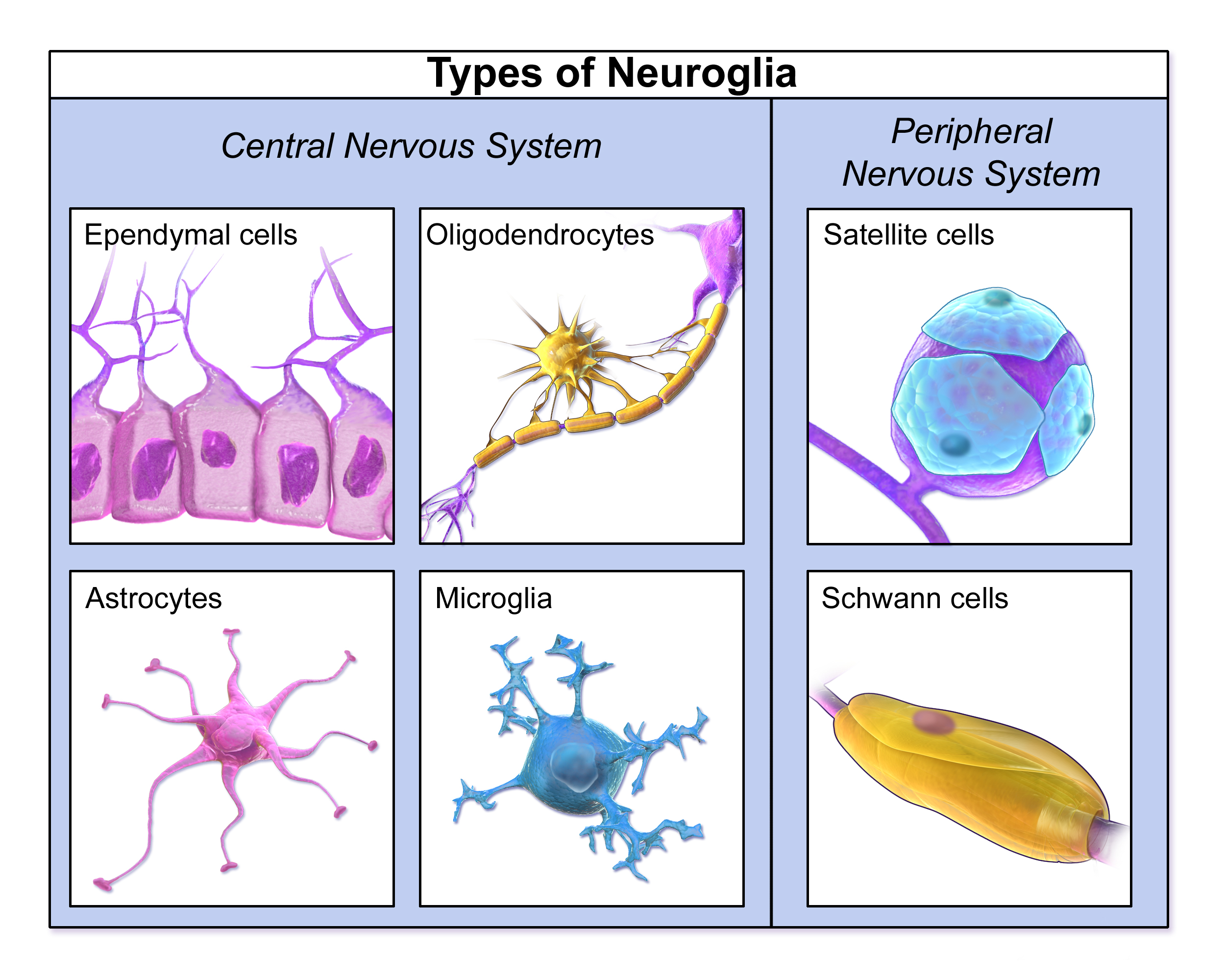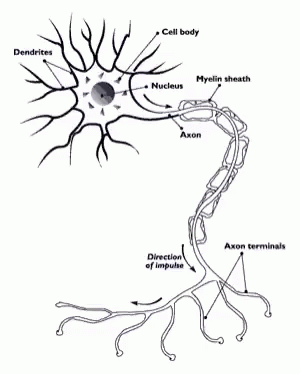The neural tissue contains two distinct cell types: neurons and neuroglia. Before knowing about these cells, lets first discuss briefly the Nervous System.
- The nervous system is among the smallest of organ systems in terms of body weight and yet is the most complex and the most important one.
- The nervous system includes all of the neural tissue in the body including the brain, the spinal cord, sensory organs, and the interconnecting nerves.
- The nervous system along with the endocrine system controls and adjusts bodily functions.
- The nervous system is divided into two parts: The central nervous system (CNS) containing the brain and the spinal cord, and the Peripheral nervous system (PNS) contains the peripheral nerves and neural tissue outside of CNS.
The central nervous system is responsible for the integration, processing, and coordination of the sensory and motor responses. It also involves higher functions such as memory, learning, intelligence, and emotion.
The CNS communicates with different parts of the body via the PNS by sending and receiving electrical impulses specific to the reaction needed. Afferent pathways bring in the sensory information to the CNS and the efferent pathways relay the motor information from the CNS to the other parts of the body.
Cells of the Central Nervous System
The neural tissue contains two distinct cell types: neurons, or the nerve cells, and neuroglia, the supporting cells.
The neurons are responsible for the transmission and processing of information in the nervous system. The neuroglia, supporting cells, isolate these neurons and provide a supporting framework, help maintain the intracellular environment and also act as phagocytes (cells that destroy bacteria and other pathogens).

Neuroglia is glial cells smaller than neurons, and they retain their ability to divide as opposed to neurons. Collectively, they account for nearly half the volume of the nervous system.
In the CNS, there are four distinct types of neuroglia – Astrocytes, Oligodendrites, Microglia, and Ependymal Cells. They perform a variety of functions including maintaining the blood-brain barrier, creating a 3D framework for the CNS, performing repairs in damaged neural tissues, guiding neuron development, providing structural stability, phagocytosis, neuron myelination, transport of cerebrospinal fluid (CSF) are to name a few.
Structurally, a neuron has a cell body called the soma. The cell body usually has several branching dendrites. Furthermore, the cell body is attached to an elongated axon that ends at one or more synaptic terminals. At each synaptic terminal, the neuron communicates with another cell.
The soma contains the organelles responsible for energy production and the biological synthesis of organic molecules. The neuronal nucleus is highly packed with mitochondria which generate ATP to meet the high energy demands of an active neuron.

